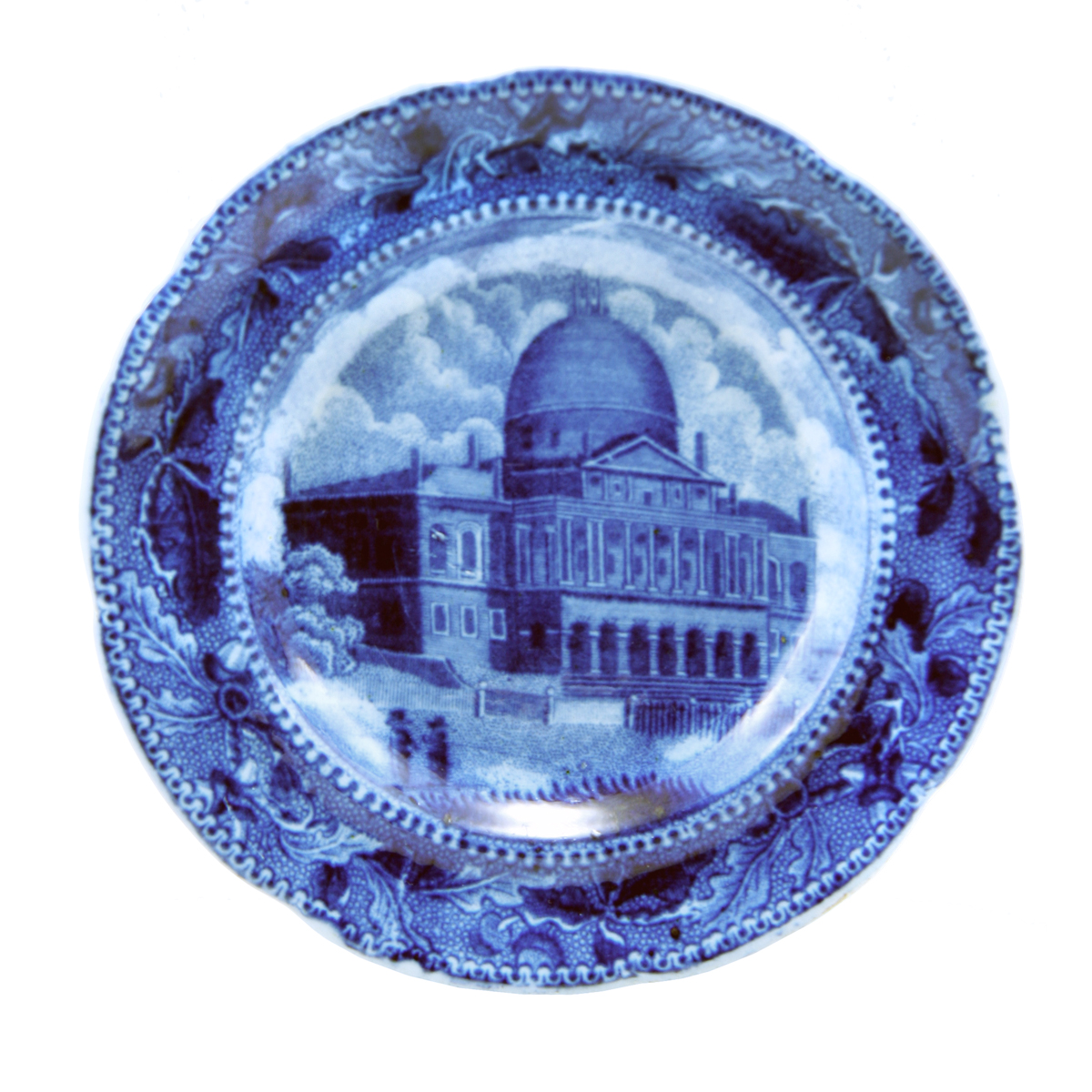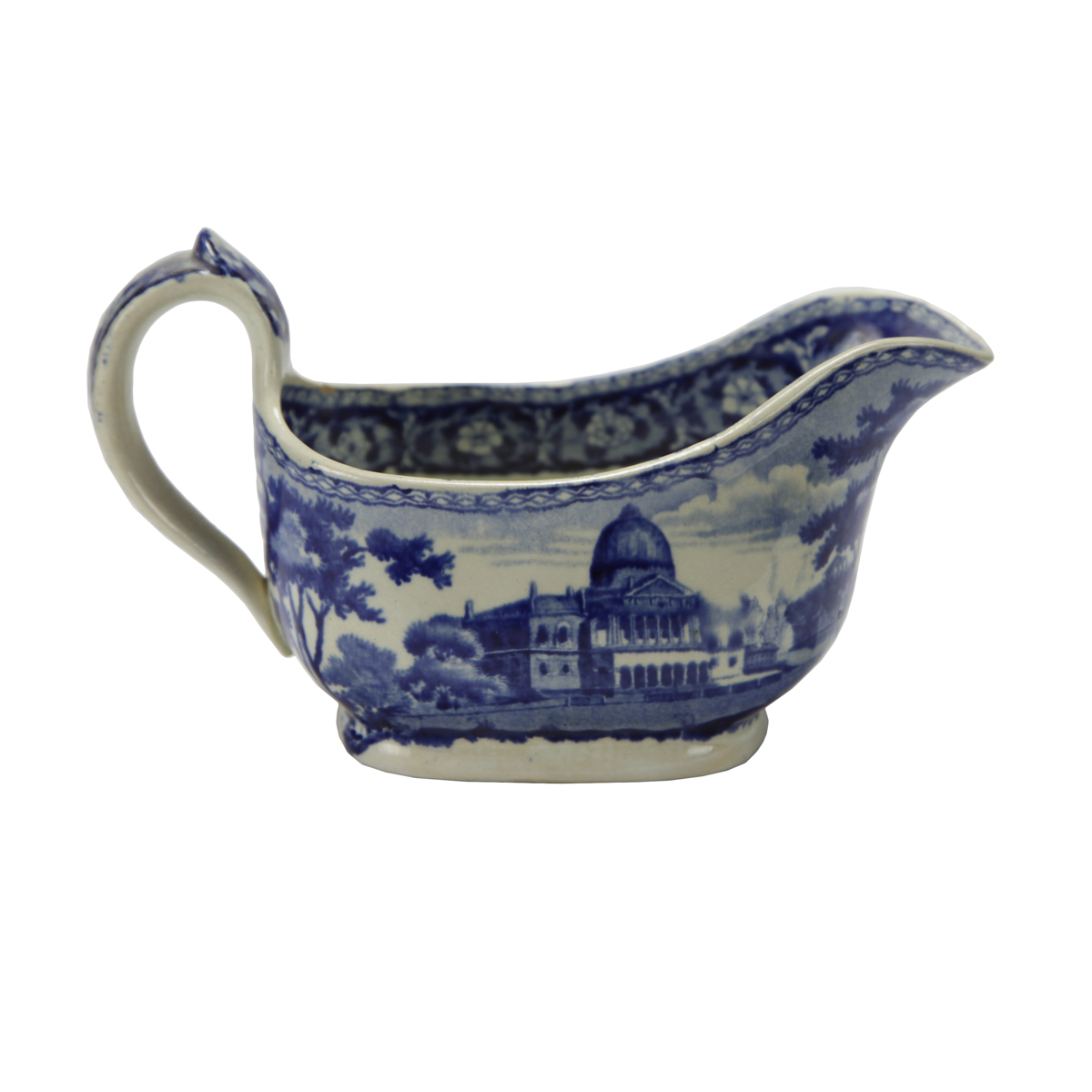State House, Boston

Image courtesy Historic New England |
Print Title: New State House Description: The New State House in Boston was one of several New England state houses designed by Charles Bulfinch. It earned its name when it became the new home of the government in 1798, three years after Samuel Adams laid its cornerstone, when it moved out of the offices that had served since 1713. For his State House in Boston, Bulfinch drew on design inspirations from his study of London architecture, specifically William Chambers' Somerset House and James Wyatt's Pantheon. The dome was originally covered in wood shingles, later replaced by copper sheathing by Paul Revere's company in 1802, finally coated in gold leaf in 1874. Charles Brigham oversaw the addition of east and west wings to the structure in 1895. Bulfinch built on part of Beacon Hill, on land once owned by John Hancock (signer of the Declaration of Independence), whose house stands just to the left of it in early images. A great 1815 storm damaged the first Common fence, built in 1784, which required extensive mending from 1815 to 1820. Cows were allowed to graze on the Boston Common at the foot of Beacon Hill from its inception until they were banned in 1830. Print Source: This image appeared first in Charles Shaw's 1817 Topographical and Historical Description of Boston published by Oliver Spear and engraved by George Bowen but all of the plates in Shaw's Description were clearly marked "engraved for the History of Boston," which may refer to rival Boston engraver Nathaniel Dearborn's original 1814 concept for a history titled "Picture of Boston." Dearborn is listed as delineator on Shaw's Description, with brothers Henry and Abel as engravers. Abel Bowen had only come to Boston the previous year and set up shop. Within five years of Shaw's book Bowen began working on his own history of Boston, but disputes within his partnership delayed its release. Bowen purchased the rights to Shaw's book and hired Caleb Snow to edit the text, releasing his History of Boston in 1825. Bowen also later released his own Picture of Boston in 1829, drawing on many of the same plates used in both Shaw and Snow. |
|||||||||
Pattern & Print Source Comparison
|
||||||||||



